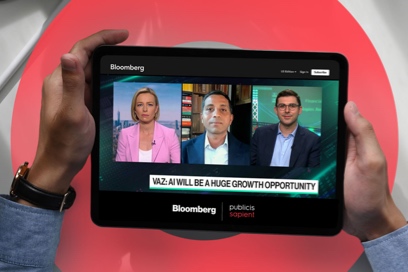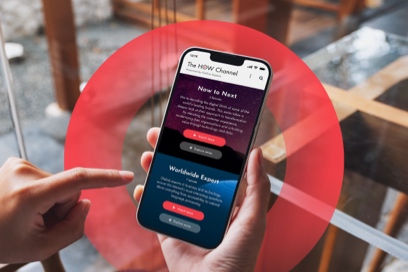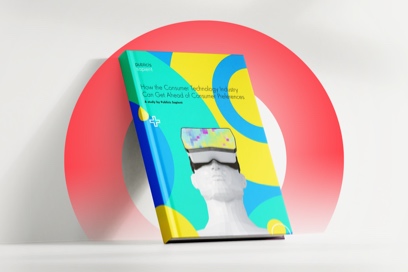The COVID-19 pandemic drove many changes in behavior, one of which was that a higher percentage of customers across demographics browsed and purchased more goods online than ever before. Now, due to this heightened online experience, customer expectations have never been higher. Customers expect it to be easy to browse and check out. They expect inventory to be accurate. They also expect shipments to be fast and free. If they do need to return something, they expect it to be free and easy. In addition, customers expect retailers to know them personally and treat them with personalized interactions (more on that later.) In today’s competitive environment, there is no room for mistakes.

Insight
Riding the Omnichannel Fulfillment Wave Profitably
Riding the Omnichannel Fulfillment Wave Profitably
How can retailers guarantee their omnichannel promise?
“Customers expect where they shop to know them and treat them with personalized interactions. Whether online or in the store or talking with customer service. They expect product information to be detailed and accurate.”
Net net, customers expect “the promise” to be met. For the retailer who gets this right, the rewards are high. Improved business margins and potentially higher profitability are just a few of the wins to be achieved.
So why is this not always happening?
Without accurate inventory, retailers risk not being able to make a promise to customers or deliver on that promise. In this event, they will lose customers and struggle to compete to capture new customers. One of the biggest stumbling blocks is the way in which companies are organized. Teams work in silos without a single source of truth to drive and deliver the customer promise.
The biggest divide is often between the selling team—or front-end team—who have responsibility to take the product to market and build the online experience—and the back-end fulfillment team. Whilst these teams do communicate, it is often not in real time. This arrangement results in one team who is optimizing the promise, another team optimizing the fulfillment location, and a third or fourth team optimizing the delivery options. There is little or no integration across the chain to maximize the customer promise.
“Someone is optimizing the promise, someone is optimizing the location, and someone is optimizing the delivery, ... it is not integrated. You need to make a paradigm shift to look at promise to delivery in totality.”
What might an intelligent promise look like?
An intelligent promise is a commitment made between a retailer and a customer that the goods (or services) the customer has selected (size, color, installation etc.) that is shown as available, is then delivered as selected (in store collection, or shipping) on the date promised. In today’s competitive environment, it is incumbent upon retailers to meet the promise, if not beat the promise, to retain and grow their customer base. There are several things’ retailers must get right to make this happen.
First is inventory visibility and a deeper understanding of the accuracy of available-to-promise inventory across all fulfillment centers. An intelligent promise starts with an inventory picture—that can be as easy or as complicated as you like. It starts with what’s available, in store or in a warehouse, or in a drop ship area. And of course, there are other layers — is all the inventory available to sell? Is it damaged product, or product that has been reserved for someone, or maybe it is reserved for in store dissemination? A clear inventory picture is the crucial first step—since if customers cannot see the inventory, they won’t buy it. And if you tell the customer it is available when it isn’t, not only will you lose the sale, but you’ll potentially lose the customer. Second chances do not happen very often.
The second thing to get right is the promise itself—which requires a lot of science. Once a customer has found the product they want to purchase (and feel confident that it is available and can be delivered), their next question is, “when can I get it and what is it going to cost me?” Intelligent Promise capabilities enable retailers to know where the product is located, be that in a local fulfillment center, or the other side of the country. Can I offer standard delivery or express delivery, or do I need to charge a premium? Intelligent promising works from a single source of truth and knows exactly where to select the product to reach the optimum delivery time, without incurring any extra costs for the retailer.
“Intelligent Promising was designed with the shopper in mind. There are many things the shopper doesn’t know going on behind the scenes. However, when the shoppers search and make choices, they feel more confident that the retailer can deliver what they want.”
Intelligent promising also enables retailers to overlay loyalty concepts—so the system will recognize if it is dealing with a premium customer, and then you can define rules that apply. For example, if a premium customer wants to upgrade to express delivery (which let’s say costs $5 more), do we want to give them an upgrade for free? The increased trust and loyalty could result in greater customer loyalty and more sales down the road.
Other factors come in the last mile logistics and the carrier selected for delivery. The retailer must consider the carrier performance when making a promise to deliver on a certain date and at a certain time. The legacy and performance of the carrier will factor into the promise. Artificial Intelligence comes into play by looking at the history and past performance of any given carrier. AI looks for patterns and will make suggestions based on historical information. If a given carrier has reneged on their delivery times in the past six months, the search engine can select a different carrier with a better performance record.
Finally, how does intelligent promising drive revenue and profitability?
When a retailer can meet or beat their promise, then they improve customer conversion. When they get what they want, customers return and overtime they become loyal. Increases in conversion equate to increases in revenue.
However, while we need to satisfy the customer, especially the premium customer, we don’t want to be making a loss. That is why Intelligent Promising also looks at the cost aspects to make sure the retailer is not offering express shipping at no extra cost to a regular customer—or deciding the optimum location to source the product in terms of delivery costs. Intelligent promising can incorporate a multitude of factors to ensure the customer gets what they want—without the retailer losing their shirt.
Once again, the goal here is to at least meet the promise, but let’s try to beat the promise—and that can be enabled when you introduce global inventory visibility and a global promising commitment.
“It all comes down to a reliable service and they [customers] are going to get it on the day that you promise them. If the promise is broken the trust with a customer is broken.... if they feel the service is unreliable then they’ll go elsewhere. Trust in the products, but also trust in the service.”










